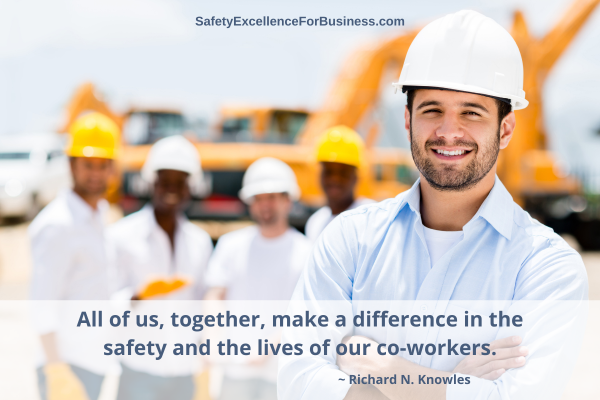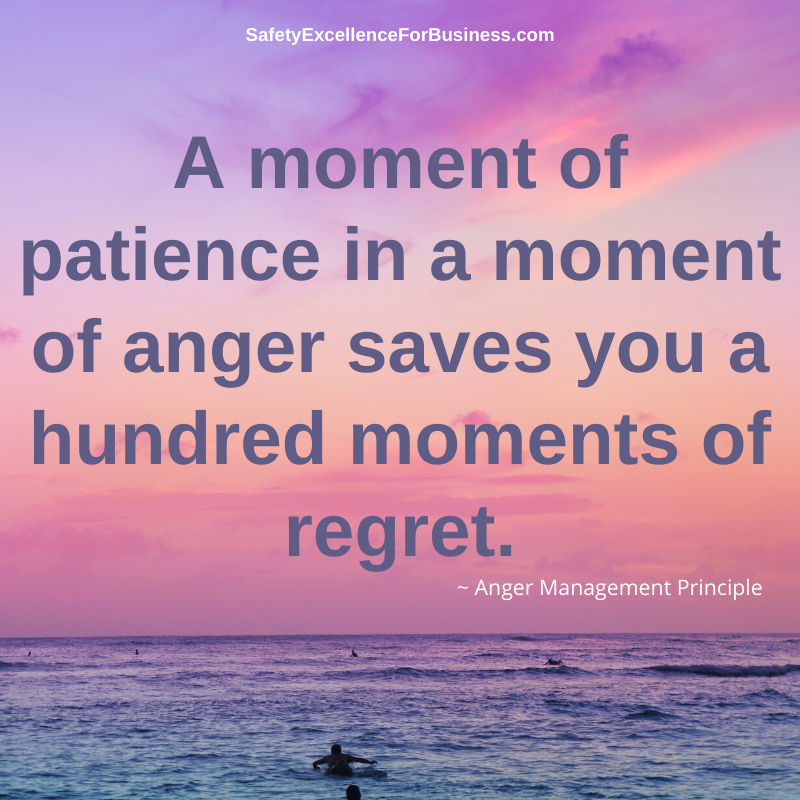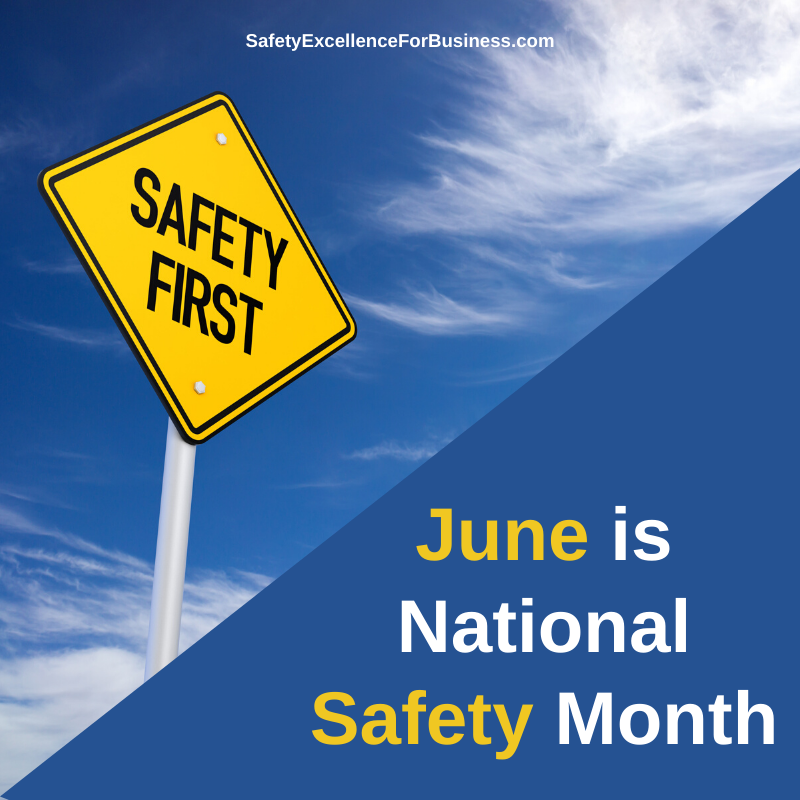All of us, together, make a difference in the safety and the lives of our co-workers.
When Claire Knowles, Robin Nagele, and I (NageleKnowlesAndAssociates.com) are asked to come into an organization to help them reduce the risks of workplace violence and develop an active shooter protection plan, we have a good selection of options for them to consider, ranging from a comprehensive training and development plan to a bare-bones introduction. We see workplace violence ranging from a simple lack of respect to harassment to bullying to fighting and even murder, and our offering covers the range. Workplace violence can happen from the inside (bullying, harassment incivilities) and from the outside (perpetrator entering the workplace with intent to do harm). It covers Psychological Safety and Physical Safety.

However, many people see this whole subject from a wide range of perspectives. It is very unlikely that an active shooter situation will develop here so why bother? Well, according to the Bureau of Labor Statistics in 2019, 761 people were murdered at work. Homicides were 454 and suicides were 307. This is the fourth highest cause of workplace fatalities. Could that happen here? It is a myth if you think it can’t happen in your workplace.
Harassment and bullying are HR problems and not often considered safety problems–but they are because they impact psychological safety. They can lead to people making mistakes and getting hurt. Lack of respect, harassment and bullying are just little issues (unless you are the target) so why spend the money? According to the Bureau of Labor Statistics in 2019, in addition to the 307 suicides, there were 313 drug overdoses at work. What was the impact of harassment and bullying on these people? Their psychological safety is hugely impacted. There are all sorts of ways to try to talk your way out of these sorts of issues. But there is a big impact on both the people and the businesses’ profits.
In the unlikely event of an active shooter situation, people can be killed and injured, the business will be shut down as a crime scene, the bad publicity runs rampant, and the regulators and lawyers will be all over the place. Your relationships with your people and customers will be a shambles. This results in huge losses.
When the business leaders tolerate lack of respect, harassment and bullying, the workplace is not psychologically safe, and people stop talking together and sharing information. This costs a lot of money in grievances and HR meetings, etc. It also costs a lot in missing the possibility of new business opportunities that are discovered as people talk together about how the business is doing and find new ideas for new opportunities emerging from their conversations.
We can all come together and address the elimination
of all forms of workplace violence.
Let’s pull together and make it happen for the good of us all.
Building a Better Place – We can do this Together!
There is so much bad news of workplace shootings, conflict of all sorts in our cities and streets, police and other citizens being killed and the endless arguments in our governments at all levels that it is tempting to just try to shut everything off and pretend nothing is happening. It feels as if we are in chaos with no good answers to be found.
But there are many good people in our cities and states, in volunteer organizations, in our governments and businesses. We need to rise above all this noise and strife. I believe that most people want to live good, safe lives, to raise their families, to seek life, liberty, and happiness. We want this in our private lives, in our homes, towns and cities as well as in our places of work where we spend so much time.
We can each make a positive difference in our homes, neighborhoods and at work. We can look for the good we each have to offer and make connections. We can have conversations together about how we are doing. We can talk about the little things that matter and connect us. We can show caring for each other and kindness. We can value our differences without trying to force them onto someone else. We can do this at work where we spend so much time together. We can find our common purpose and build on that.
As all of you readers know I have a great concern about leadership and workplace safety. When we build a more harmonious workplace the levels of anger and frustration drop. We can treat each other as real people and not some object to push around. We can build a better workplace with co-created principles and standards of behavior.
I know we can do these things because we did this at the plants where I was the manager and in the businesses in which I consult. When we co-create our principles and standards, working together with respect and listening, sharing information freely, helping people to see that their work is important, the levels of anger and frustration drop. I have seen this many times over. When this happens, more and more of the time we are focused at doing things right and the total performance of the organization improves. We can learn and grow together so our levels of knowledge and understanding go up. Fewer injuries and incidents occur. Total quality of our life and the products we make get a lot better. I have seen this happen over and over. We can do these things if we want to do them.
Our leaders play a big role in this by setting the standards and modeling the positive behaviors that are so important. We all watch our leaders and those with integrity and a caring heart are those we most admire. Their behaviors and the words they use set the way for us all.
However, we all have a role to play. We can all be winners as we pull ourselves up. Sometimes, it is not easy, but we can all do this with courage, caring, concern for each other and commitment to the dream of a better world.
If you do not do this, then who is going to do it? It rests on each of us.

 You can’t turn on the news or check your Internet homepage without sensing the depth of the issues that our country is experiencing. Whether it is returning to the workplace amidst COVID-19 rules, political protests, religious non-tolerance, or negative nightly news events – we’re experiencing a wide berth of dramatic events. And each of us has an opinion, a response, a way that we individually see these events and cope with this discord.
You can’t turn on the news or check your Internet homepage without sensing the depth of the issues that our country is experiencing. Whether it is returning to the workplace amidst COVID-19 rules, political protests, religious non-tolerance, or negative nightly news events – we’re experiencing a wide berth of dramatic events. And each of us has an opinion, a response, a way that we individually see these events and cope with this discord. It doesn’t have to be that way! Take a timeout!
It doesn’t have to be that way! Take a timeout! In times like this, when the business and production activities are ramping up, there is a real danger that safety problems will show up. Any time the level of activity changes, up or down, is a time of danger.
In times like this, when the business and production activities are ramping up, there is a real danger that safety problems will show up. Any time the level of activity changes, up or down, is a time of danger.




